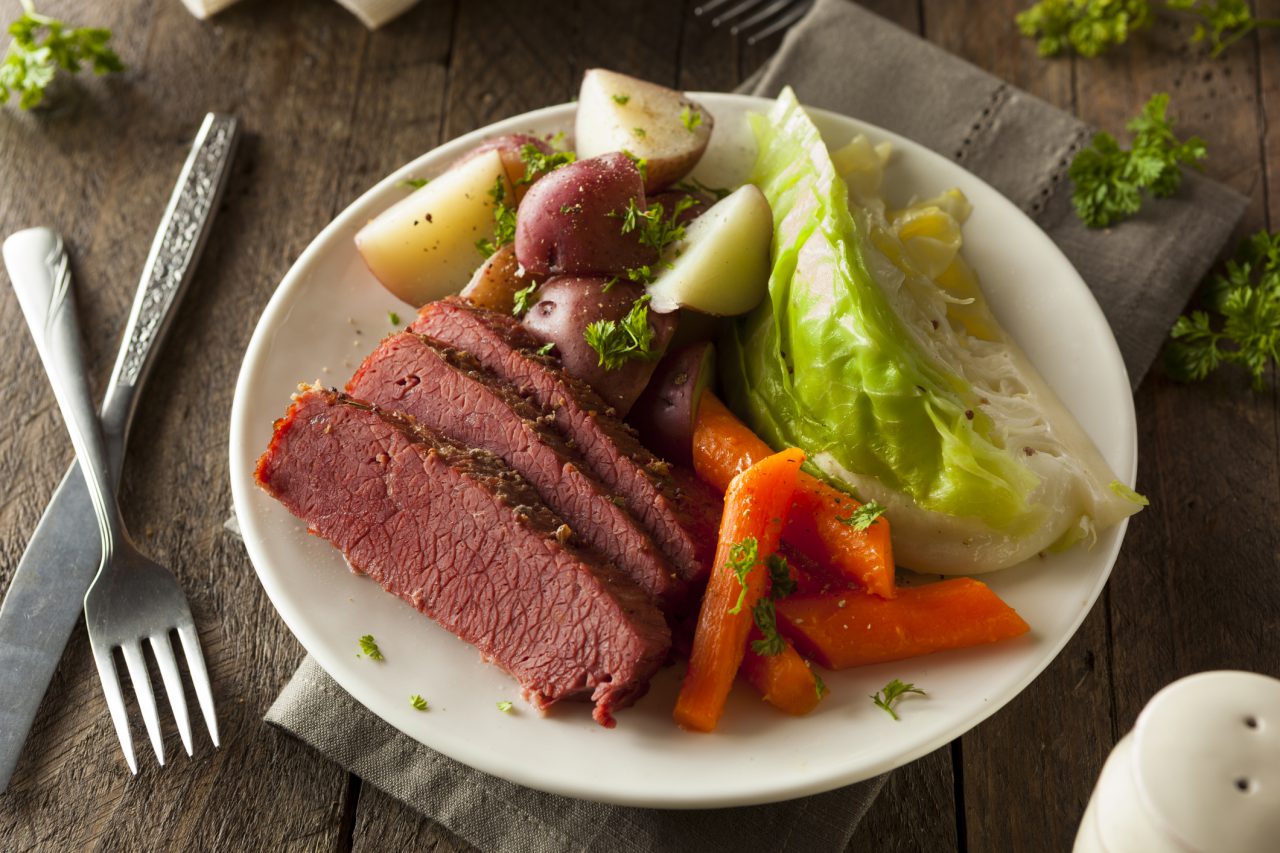A few years ago I was in the middle of a St. Patrick’s Day parade in New Orleans. In addition to throwing beads, people on the floats were tossing out heads of cabbage. Those would hurt a lot more than green beads if they fell on my head, so I stood back. My friend, a NOLA resident, jumped in and grabbed a couple like a pro baseball catcher. She carried them home and made some great corned beef and cabbage for dinner the next evening.
A traditional Irish St. Patrick’s Day meal, right? Not quite.
In Ireland, you don’t find people eating that combination of cured beef brisket and cruciferous vegetable (or drinking green beer, either) for the holiday. The tradition of corned beef and cabbage for the day actually started in the U.S.
According to Smithsonian magazine, for centuries in Ireland the common people couldn’t afford beef. Most of it was exported overseas to the U.S. for sale. Pork, particularly sausage and bacon, was the common meat.
In the mid-1800s, Irish beef exports began to decline as U.S. beef farming increased. Then the Great Famine struck Ireland, which spurred mass migrations to America. Because they faced stiff prejudice in their new country, Irish immigrants tended to settle around established immigrant communities in large cities, such as New York. Despite the adversity, Irish immigrants were making more money than they could back home.
They could occasionally afford — and relished — beef, but only less expensive cuts. And here is one of the fascinating intersections in food history: They often purchased corned beef from Jewish delis. The curing flavor and texture was similar to Irish bacon back home, which made it appealing.
The article says that the Irish may have felt comfortable settling near Jewish neighborhoods and shopping in Jewish markets in New York because the two cultures actually had a lot in common.
From Smithsonian: “Both groups were scattered across the globe to escape oppression, had a sacred lost homeland, were discriminated against in the U.S., and had a love for the arts.”
Irish Americans transformed St. Patrick’s Day from its former life as a religious holiday into a celebration of Irish culture. How fitting, then, that they should mark the special occasion by treating themselves to corned beef from the nearby deli.
So, enjoy corned beef and cabbage for St. Patrick’s Day as a tribute to determined Irish immigrants who made their way in a new world, and to the ways food cultures can intersect. But duck if you see a cabbage flying your way.
Corned Beef and Cabbage Recipe
Corned beef and cabbage is a perfect recipe for a slow cooker, especially since corned beef is a cut that offers best results when braised. You can easily find corned beef sealed in a package with pickling juices at the supermarket. Open the package in the sink. You may want to rinse the meat a little if there’s a lot of brine inside.
- Peel and slice some potatoes and place them in the bottom of the slow cooker. Place the corned beef on top of the potatoes.
- Add 1 1/2 to 2 cups of liquid to the cooker — beer (regular color, not green) might be nice, or water is fine.
- Cover and cook on the high setting for about 5 1/2 hours.
- Cut a head of cabbage into wedges or thick slices and add to the crock.
- Then cook for another 30 minutes or so.
- The beef will be done when it shreds easily.









